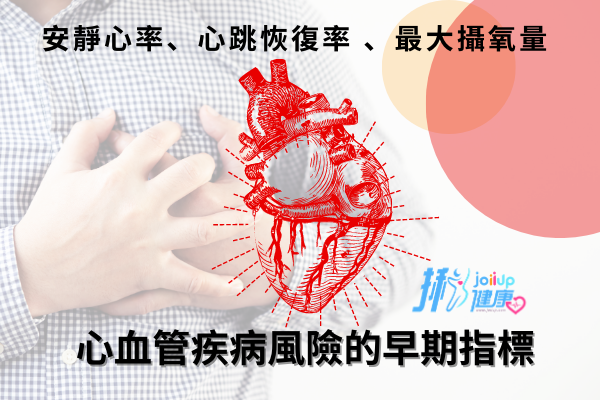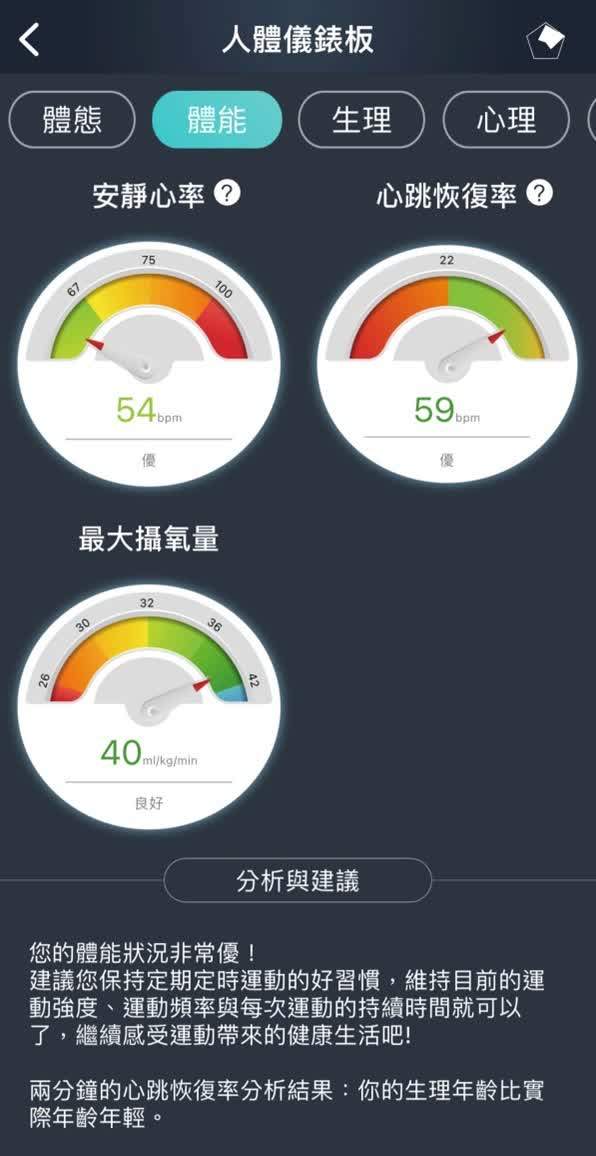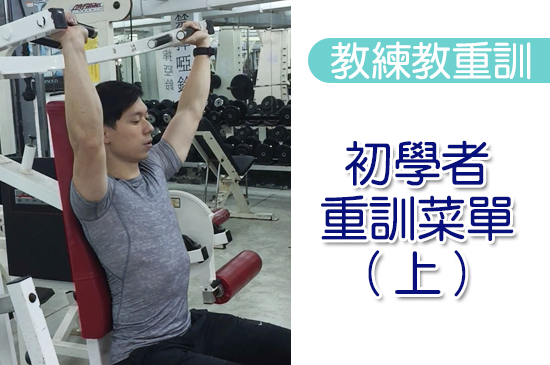www.joiiup.com
心血管疾病風險的早期指標:安靜心率、心跳恢復率與最大攝氧量
安靜心率(RHR)、心跳恢復率(HRR)和最大攝氧量(VO₂ max)是評估心血管功能的標準方法。RHR受自律神經系統交感神經和副交感神經的相互作用控制。無論內部環境如何變化,自律神經系統都能保持體內動態平衡。但是,如果交感神經系統過度活躍而導致的心率加快會導致心血管功能障礙 [1]。

虹映嚴選推薦 隨時隨地幫你顧心率
『讀懂你的身體Garmin Vivosmart 4』$獨家優惠
VO₂ max水平是心肺適能或運動能力估計值的單一預測指標,對心血管疾病具有保護作用 [2]。幾項流行病學研究表明,高RHR與低VO₂ max與心血管疾病的高風險有明顯的相關性 [3–6]。心血管疾病的發作歸因於動脈粥樣硬化。儘管動脈粥樣硬化是冠狀動脈和腦動脈疾病的主要原因,但要等到臨床症狀出現後才容易診斷。最近,頸動脈內膜中層厚度(carotid intima-media thickness, CIMT)測試已被認為可用於診斷動脈粥樣硬化 [7]。美國心臟協會[8]建議CIMT是心血管疾病風險的獨立影響因素。
許多研究還表明,CIMT與心血管危險因素有關 [9–12]。另外,根據社區動脈粥樣硬化風險的研究 [13],當CIMT> 1mm時,男性的冠狀動脈疾病的風險是1.85倍,女性是5.07倍。研究人員 [14]還發現,當CIMT增加0.1mm時,發生心肌梗塞和中風的風險分別增加10%~15%和13%~18%。因此,CIMT是動脈粥樣硬化的標誌物,可以預測心血管疾病的風險。在這方面,有必要研究RHR,HRV與VO₂ max作為心血管功能指標與CIMT之間的關聯。
2019年,南韓的研究團隊於《IJC Heart & Vasculature》期刊發表,健康中年男性中VO₂ max和CIMT之間的關係 [15]。研究人員根據VO₂ max水平檢查了頸動脈粥樣硬化的相對風險,這項研究的對象是2010年至2016年在南韓國家健康中心進行身體檢查的707位40~50歲的男性,最大VO₂ max通過分級運動測試進行測量。受試者的最大攝氧量分為3個等級,CIMT通過B型超音波測量,頸動脈粥樣硬化定義為CIMT> 1mm。高VO₂ max組和中VO₂ max組的CIMT顯著低於低VO2 max組,VO₂ max與CIMT之間也存在相關性,低VO₂ max組的頸動脈粥樣硬化的相對風險比高VO₂ max組高3.56倍。
虹映嚴選推薦 內建血氧感測 掌握VO₂ max
『讀懂你的身體Garmin Vivosmart 4』$獨家優惠
另一研究也發現50歲以上的中國中老年人的RHR與CIMT相關 [16]。與RHR低於67 bmp的參與者相比,RHR高於81 bpm的參與者CIMT升高2.82倍,而頸動脈斑塊升高2倍。RHR每增加10 bmp,CIMT升高1.47倍,頸動脈斑塊的比值比為1.40。此關聯性獨立於傳統的心血管危險因素。同樣,在以前的研究中,心臟自律神經系統活動的心率變異性分析也與CIMT相關 [17,18]。先前的研究也表明,高水平的VO₂ max,CIMT越低 [19,20]。此外,高血壓和2型糖尿病患者的低心肺適能也與CIMT升高有關 [21,22]。
運動後緩慢HRR代表著副交感神經功能的受損,也是全因和心血管疾病死亡率的預測指標。頸動脈粥樣硬化與冠心病(CHD)和中風的高風險相關。在一項對12712名中年男性(49.1±8.9歲)的橫斷面研究中 [23],研究人員檢驗了HRR低下與頸動脈粥樣硬化相關的假設。HRR計算為梯度鍛鍊跑步機測試期間的最高心率與停止運動後2分鐘的心率之差。結果發現HRR最低四分位數(<44 bpm)的受試者發生頸動脈粥樣硬化的可能性是最高四分位數的受試者(HRR> 61 bpm)的1.50倍。
小結
這些結果表明,心血管健康指數VO₂ max、RHR及HRR與CIMT相關,因此是頸動脈粥樣硬化患病率的重要與早期指標。此外,據研究報導,定期鍛鍊可有效提高心血管功能並降低CIMT [24]。
JoiiSports app人體儀表板的體能部分(如圖一)已能提供VO₂ max、RHR及HRR三個數值的即時分析服務,這對於一般民眾日常自我心血管風險健康狀態的管理,是個非常重要且有價值的資訊。

圖一、JoiiSports app人體儀表板的體能部分提供VO₂ max、RHR及HRR三個數值的即時分析服務
虹映嚴選推薦 智慧連結 即時分析
『讀懂你的身體Garmin Vivosmart 4』$獨家優惠
參考資料
[1] https://www.ncbi.nlm.nih.gov/pmc/articles/PMC6441756/
[2] https://pubmed.ncbi.nlm.nih.gov/17137583/
[3] S. Kurl, J.A. Laukkanen, R. Rauramaa, et al. Cardiorespiratory fitness and the risk for stroke in men, Arch. Intern. Med., 163 (2003), pp. 1682-1688
[4] X. Sui, M.J. LaMonte, S.N. Blair, Cardiorespiratory fitness as a predictor of nonfatal cardiovascular events in asymptomatic women and men, Am. J. Epidemiol., 165 (2007), pp. 1413-1423
[5] T.R. Wessel, C.B. Arant, M.B. Olson, et al., Relationship of physical fitness vs body mass index with coronary artery disease and cardiovascular events in women, JAMA, 292 (2004), pp. 1179-1187
[6] S. Kodama, K. Saito, S. Tanaka, et al., Cardiorespiratory fitness as a quantitative predictor of all-cause mortality and cardiovascular events in healthy men and women: a meta-analysis, JAMA (2009), pp. 2024-2035
[7] S.H. Johnsen, E.B. Mathiesen, Carotid plaque compared with intima-media thickness as a predictor of coronary and cerebrovascular disease, Curr. Cardiol. Rep., 11 (2009), pp. 1-27
[8] S.C. Smith Jr., P. Greenland, S.M. Grundy, AHA conference proceedings: prevention conference V: beyond secondary prevention: identifying the high-risk patient for primary prevention: executive summary, American Heart Association, Circulation, 101 (2000), pp. 111-116
[9] P.H. Davis, J.D. Dawson, W.A. Riley, et al., Carotid intimal-medial thickness is related to cardiovascular risk factors measured from childhood through middle age, Circulation, 10 (2001), pp. 2815-2819
[10] S. Ebrahim, O. Papacosta, P. Whincup, et al., Carotid plaque, intima media thickness, cardiovascular risk factors, and prevalent cardiovascular disease in men and women: the British Regional Heart Study, Stroke., 30 (1999), pp. 841-850
[11] A. Scuteri, S.S. Najjar, D.C. Muller, et al., Metabolic syndrome amplifies the age-associated increases in vascular thickness and stiffness, J. Am. Coll. Cardiol., 43 (2004), pp. 1388-1395
[12] M. Tatsukawa, Y. Sawayama, N. Maeda, et al., Carotid atherosclerosis and cardiovascular risk factors: a comparison of residents of rural area of Okinawa with residents of a typical suburban area of Fukuoka, Japan, Atherosclerosis, 172 (2004), pp. 37-43
[13] L.E. Chambless, G. Heiss, A.R. Folsom, et al., Association of coronary heart disease incidence with carotid arterial wall thickness and major risk factors: the Atherosclerosis Risk in Communities (ARIC) Study, 1987–1993, Am. J. Epidemiol., 146 (1997), pp. 483-494
[14] M.W. Lorenz, H.S. Markus, M.L. Bots, et al., Prediction of clinical cardiovascular events with carotid intima-media thickness: a systemic review and meta-analysis, Circulation, 115 (2007), pp. 459-467
[15] B.M. Curtis, J.H. O'Keefe, Autonomic tone as a cardiovascular risk factor: the dangers of chronic fight or flight, Mayo Clin. Proc., 77 (2002), pp. 45-54
[16] L. Wang, N. Zhang, B.G. Sun, et al., Elevated resting heart rate is associated with carotid atherosclerosis in middle-aged and elderly Chinese population, J. Stroke Cerebrovasc. Dis., 25 (2016), pp. 34-40
[17] V.L.J. Pereira, S.G. dos Santos, J.S. Fuzatti, et al., Subclinical carotid atherosclerosis is associated with alterations of time-domain indices of heart rate variability, J. Hypertens., 33 (2015), p. e258
[18] V.L.J. Pereira, M. Dobre, S.G. dos Santos, et al., Association between carotid intima media thickness and heart rate variability in adults at increased cardiovascular risk, Front. Physiol., 8 (2017), p. 248
[19] T.A. Lakka, J.A. Laukkanen, R. Rauramaa, et al., Cardiorespiratory fitness and the progression of carotid atherosclerosis in middle-aged men, Ann. Intern. Med., 134 (2001), pp. 12-20
[20] Y. Gando, K. Yamamoto, H. Kawano, et al., Attenuated age-related carotid arterial remodeling in adults with a high level of cardiorespiratory fitness, J. Atheroscler. Thromb., 18 (2011), pp. 248-254
[21] S.Y. Jae, M.R. Carnethon, K.S. Heffernan, et al. Association between cardiorespiratory fitness and prevalence of carotid atherosclerosis among men with hypertension, Am. Heart J., 153 (2007), pp. 1001-1005
[22] S.Y. Jae, K. Heffernan, B. Fernhall, et al., Cardiorespiratory fitness and carotid artery intima media thickness in men with type 2 diabetes, J. Phys. Act. Health, 9 (2012), pp. 549-553
[23] P.T. Williams, Physical fitness and activity as separate heart disease risk factors: a meta-analysis, Med. Sci. Sports Exerc., 33 (2001), pp. 754-761
[24] H. Tanaka, D.R. Seals, K.D. Monahan, et al., Regular aerobic exercise and the age-related increase in carotid artery intima-media thickness in healthy men, J. Appl. Physiol., 92 (2002), pp. 1458-1464











